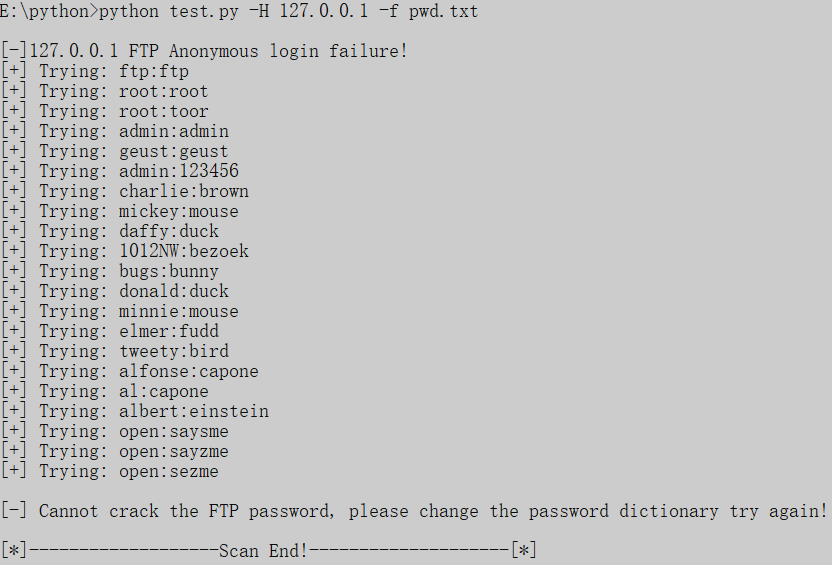python中list列表的高级函数
在Python所有的数据结构中,list具有重要地位,并且非常的方便,这篇文章主要是讲解list列表的高级应用,基础知识可以查看博客。
此文章为python英文文档的翻译版本,你也可以查看英文版:https://docs.python.org/2/tutorial/datastructures.html
use a list as a stack: #像栈一样使用列表
stack = [3, 4, 5] stack.append(6) stack.append(7) stack [3, 4, 5, 6, 7] stack.pop() #删除最后一个对象 7 stack [3, 4, 5, 6] stack.pop() 6 stack.pop() 5 stack [3, 4]
use a list as a queue: #像队列一样使用列表
> from collections import deque #这里需要使用模块deque
> queue = deque(["Eric", "John", "Michael"])
> queue.append("Terry") # Terry arrives
> queue.append("Graham") # Graham arrives
> queue.popleft() # The first to arrive now leaves
'Eric'
> queue.popleft() # The second to arrive now leaves
'John'
> queue # Remaining queue in order of arrival
deque(['Michael', 'Terry', 'Graham'])
three built-in functions: 三个重要的内建函数
filter(), map(), and reduce().
1)、filter(function, sequence)::
按照function函数的规则在列表sequence中筛选数据
> def f(x): return x % 3 == 0 or x % 5 == 0 ... #f函数为定义整数对象x,x性质为是3或5的倍数 > filter(f, range(2, 25)) #筛选 [3, 5, 6, 9, 10, 12, 15, 18, 20, 21, 24]
2)、map(function, sequence):
map函数实现按照function函数的规则对列表sequence做同样的处理,
这里sequence不局限于列表,元组同样也可。
> def cube(x): return x*x*x #这里是立方计算 还可以使用 x**3的方法 ... > map(cube, range(1, 11)) #对列表的每个对象进行立方计算 [1, 8, 27, 64, 125, 216, 343, 512, 729, 1000]
注意:这里的参数列表不是固定不变的,主要看自定义函数的参数个数,map函数可以变形为:def func(x,y) map(func,sequence1,sequence2) 举例:
seq = range(8) #定义一个列表 > def add(x, y): return x+y #自定义函数,有两个形参 ... > map(add, seq, seq) #使用map函数,后两个参数为函数add对应的操作数,如果列表长度不一致会出现错误 [0, 2, 4, 6, 8, 10, 12, 14]
3)、reduce(function, sequence):
reduce函数功能是将sequence中数据,按照function函数操作,如 将列表第一个数与第二个数进行function操作,得到的结果和列表中下一个数据进行function操作,一直循环下去…
举例:
def add(x,y): return x+y ... reduce(add, range(1, 11)) 55
List comprehensions:
这里将介绍列表的几个应用:
squares = [x**2 for x in range(10)]
#生成一个列表,列表是由列表range(10)生成的列表经过平方计算后的结果。
[(x, y) for x in [1,2,3] for y in [3,1,4] if x != y]
#[(1, 3), (1, 4), (2, 3), (2, 1), (2, 4), (3, 1), (3, 4)] 这里是生成了一个列表,列表的每一项为元组,每个元组是由x和y组成,x是由列表[1,2,3]提供,y来源于[3,1,4],并且满足法则x!=y。
Nested List Comprehensions:
这里比较难翻译,就举例说明一下吧:
matrix = [ #此处定义一个矩阵 ... [1, 2, 3, 4], ... [5, 6, 7, 8], ... [9, 10, 11, 12], ... ] [[row[i] for row in matrix] for i in range(4)] #[[1, 5, 9], [2, 6, 10], [3, 7, 11], [4, 8, 12]]
这里两层嵌套比较麻烦,简单讲解一下:对矩阵matrix,for row in matrix来取出矩阵的每一行,row[i]为取出每行列表中的第i个(下标),生成一个列表,然后i又是来源于for i in range(4) 这样就生成了一个列表的列表。
The del statement:
删除列表指定数据,举例:
> a = [-1, 1, 66.25, 333, 333, 1234.5] >del a[0] #删除下标为0的元素 >a [1, 66.25, 333, 333, 1234.5] >del a[2:4] #从列表中删除下标为2,3的元素 >a [1, 66.25, 1234.5] >del a[:] #全部删除 效果同 del a >a []
Sets: 集合
> basket = ['apple', 'orange', 'apple', 'pear', 'orange', 'banana']
>>> fruit = set(basket) # create a set without duplicates
>>> fruit
set(['orange', 'pear', 'apple', 'banana'])
>>> 'orange' in fruit # fast membership testing
True
>>> 'crabgrass' in fruit
False
>>> # Demonstrate set operations on unique letters from two words
...
>>> a = set('abracadabra')
>>> b = set('alacazam')
>>> a # unique letters in a
set(['a', 'r', 'b', 'c', 'd'])
>>> a - b # letters in a but not in b
set(['r', 'd', 'b'])
>>> a | b # letters in either a or b
set(['a', 'c', 'r', 'd', 'b', 'm', 'z', 'l'])
>>> a & b # letters in both a and b
set(['a', 'c'])
>>> a ^ b # letters in a or b but not both
set(['r', 'd', 'b', 'm', 'z', 'l'])
Dictionaries:字典
>>> tel = {'jack': 4098, 'sape': 4139}
>>> tel['guido'] = 4127 #相当于向字典中添加数据
>>> tel
{'sape': 4139, 'guido': 4127, 'jack': 4098}
>>> tel['jack'] #取数据
4098
>>> del tel['sape'] #删除数据
>>> tel['irv'] = 4127 #修改数据
>>> tel
{'guido': 4127, 'irv': 4127, 'jack': 4098}
>>> tel.keys() #取字典的所有key值
['guido', 'irv', 'jack']
>>> 'guido' in tel #判断元素的key是否在字典中
True
>>> tel.get('irv') #取数据
4127
也可以使用规则生成字典:
>>> {x: x**2 for x in (2, 4, 6)}
{2: 4, 4: 16, 6: 36}
enumerate():遍历元素及下标
enumerate 函数用于遍历序列中的元素以及它们的下标:
>>> for i, v in enumerate(['tic', 'tac', 'toe']): ... print i, v ... 0 tic 1 tac 2 toe
zip():
zip()是Python的一个内建函数,它接受一系列可迭代的对象作为参数,将对象中对应的元素打包成一个个tuple(元组),然后返回由这些tuples组成的list(列表)。若传入参数的长度不等,则返回list的长度和参数中长度最短的对象相同。利用*号操作符,可以将list unzip(解压)。
>>> questions = ['name', 'quest', 'favorite color']
>>> answers = ['lancelot', 'the holy grail', 'blue']
>>> for q, a in zip(questions, answers):
... print 'What is your {0}? It is {1}.'.format(q, a)
...
What is your name? It is lancelot.
What is your quest? It is the holy grail.
What is your favorite color? It is blue.
有关zip举一个简单点儿的例子:
>>> a = [1,2,3] >>> b = [4,5,6] >>> c = [4,5,6,7,8] >>> zipped = zip(a,b) [(1, 4), (2, 5), (3, 6)] >>> zip(a,c) [(1, 4), (2, 5), (3, 6)] >>> zip(*zipped) [(1, 2, 3), (4, 5, 6)]
reversed():反转
>>> for i in reversed(xrange(1,10,2)): ... print i ...
sorted(): 排序
> basket = ['apple', 'orange', 'apple', 'pear', 'orange', 'banana'] > for f in sorted(set(basket)): #这里使用了set函数 ... print f ... apple banana orange pear
python的set和其他语言类似, 是一个 基本功能包括关系测试和消除重复元素.
To change a sequence you are iterating over while inside the loop (for example to duplicate certain items), it is recommended that you first make a copy. Looping over a sequence does not implicitly make a copy. The slice notation makes this especially convenient:
>>> words = ['cat', 'window', 'defenestrate'] >>> for w in words[:]: # Loop over a slice copy of the entire list. ... if len(w) > 6: ... words.insert(0, w) ... >>> words ['defenestrate', 'cat', 'window', 'defenestrate']
以上就是本文的全部内容,希望对大家的学习有所帮助。
